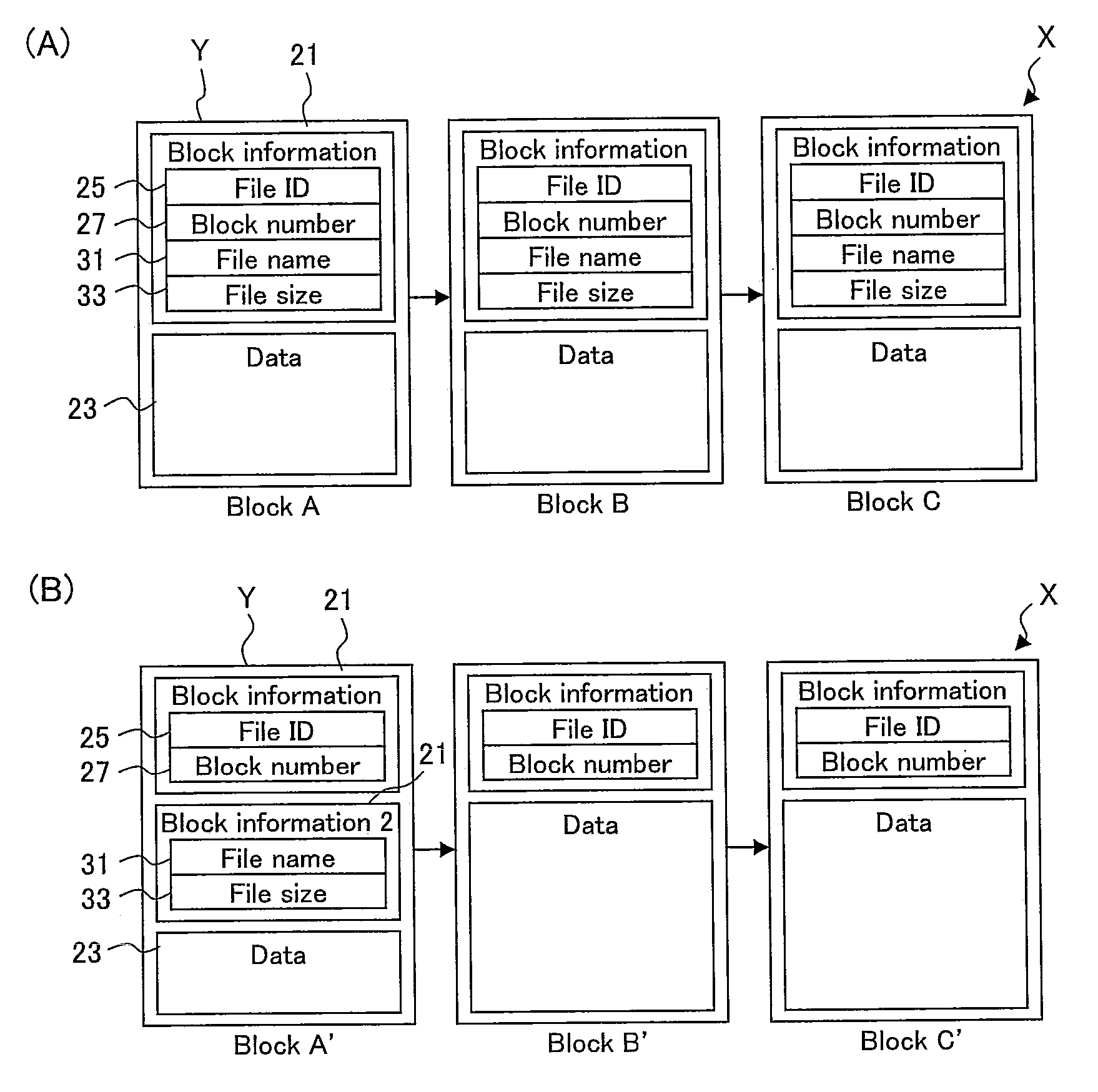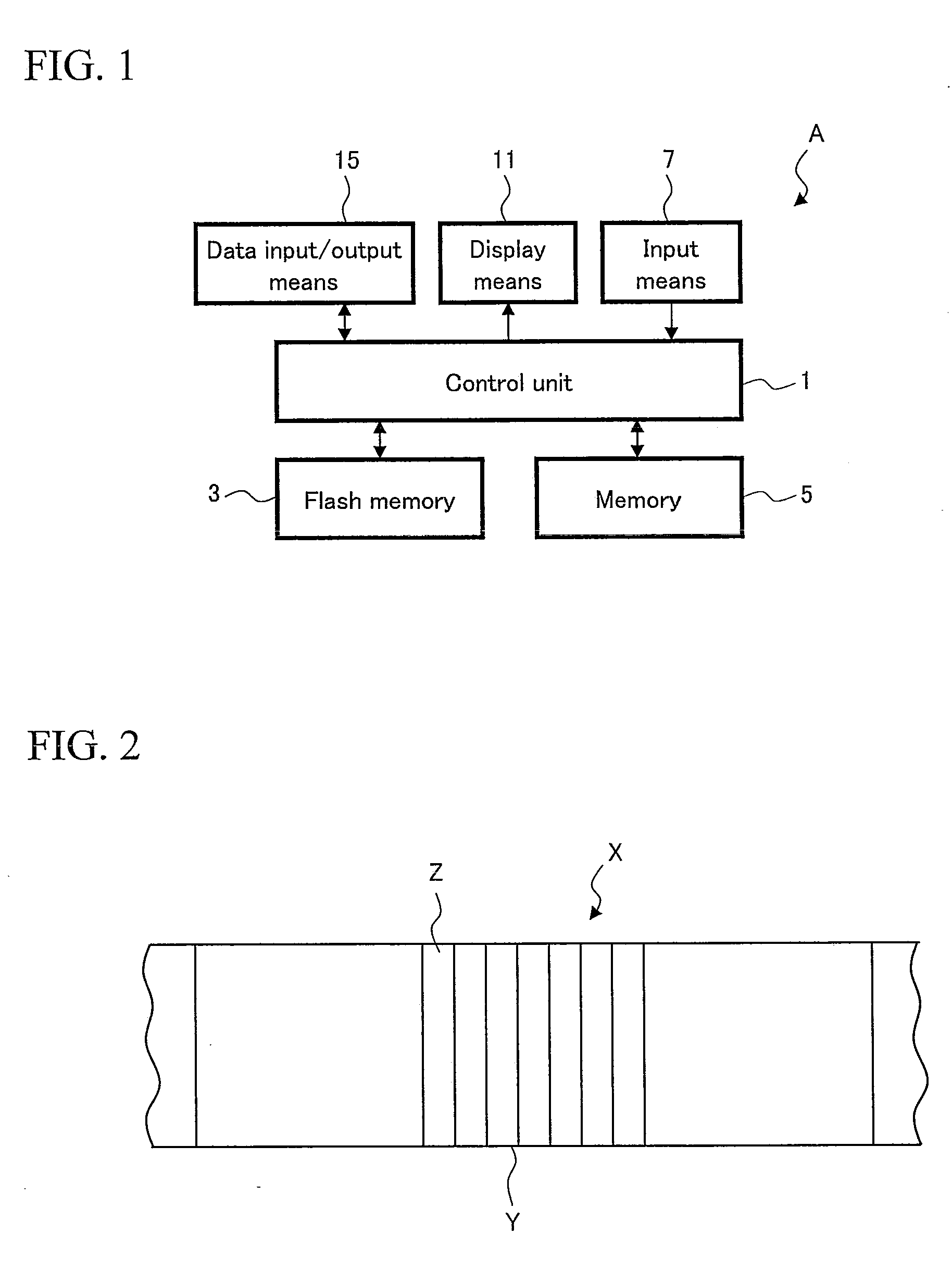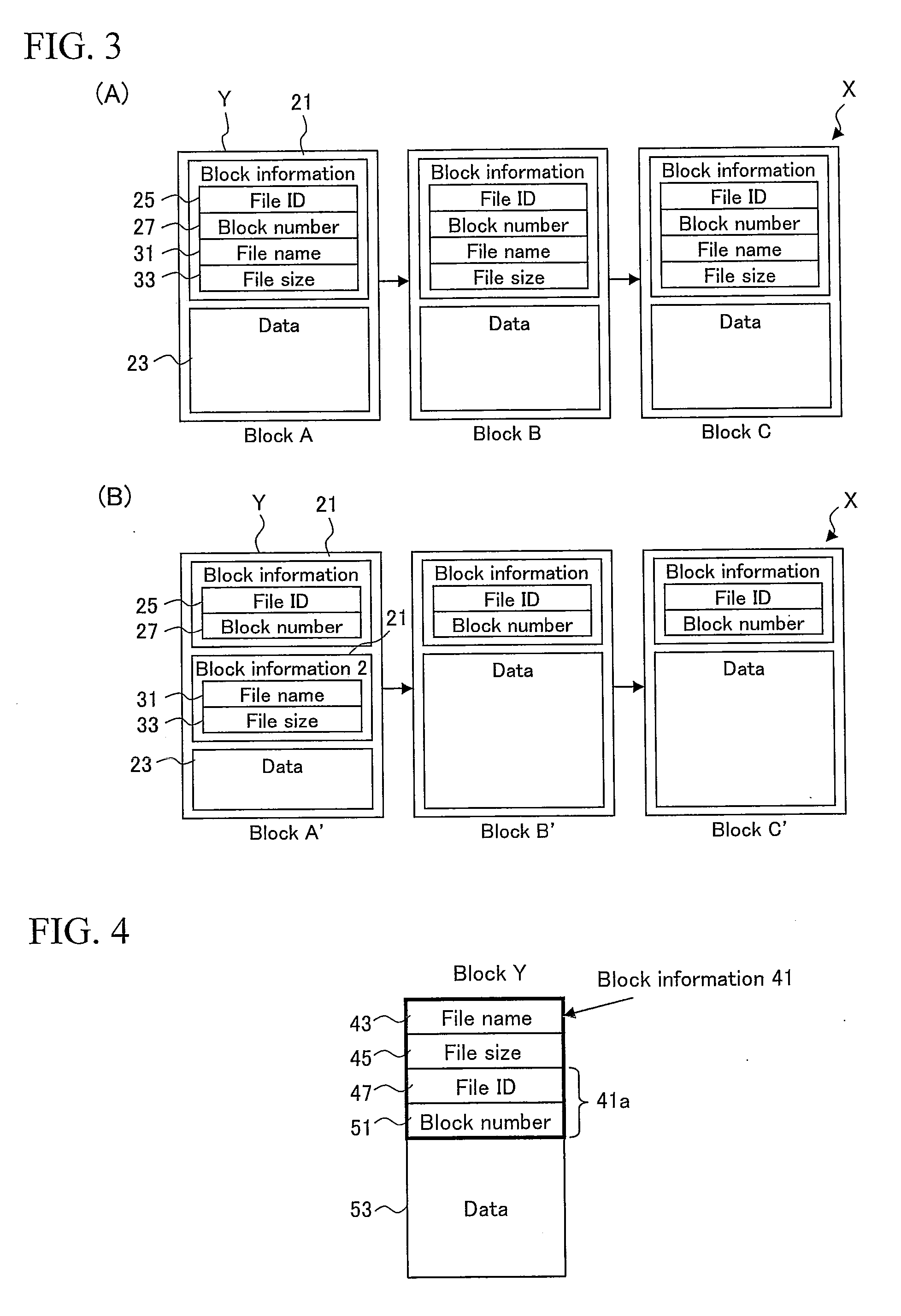File system
a file system and file technology, applied in the field of file system technology, can solve the problems of flash memory, inability to use, electrical characteristics, etc., and achieve the effects of preventing file inconsistency or file loss, high-speed initialization processing, and light processing load
- Summary
- Abstract
- Description
- Claims
- Application Information
AI Technical Summary
Benefits of technology
Problems solved by technology
Method used
Image
Examples
first embodiment
[0084]The file system according to the present invention is characterized in that file configuration information is not recorded in a given block, and block information is appended to each block by a block information appending means and the block information is recorded in each block, and thereby, at the time of mounting, the file configuration information is constructed from the block informations by a file configuration information reconstruction means. In other words, during the mount processing, block information on all valid blocks is read in, and blocks with the same file ID are collected. Then, the file configuration information is generated from a block capable of correct file reconfiguration.
[0085]Incidentally, the block information appending means is the means for appending information about a block to the block at the time of generation of write data to the block, and generally the control unit performs this using a program; however, a dedicated hardware may append the i...
second embodiment
[0147]In the file system according to the present invention, therefore, the deleting of a file is accomplished by writing a “file-delete-indicating file,” and the deleting of a previous file involves also erasing a block. Here, the file system is characterized in that the block ID of the block to be erased is appended also to the above-mentioned file. In other words, the deleting of a file is accomplished by writing a “delete-indicating file,” actually erasing a block used by the file to be deleted, and appending the block ID of the block to be actually erased to the “delete-indicating file.” Further, the erased block and the block that constitutes the “delete-indicating file” are linked, in this order, to the erase block list. Thereby, even in the event of a power-down before the re-use of the erased block, the erased block can be linked to the erase block list in an appropriate position, not to the free block list, at the next time of the mount processing. The reason is as follows...
PUM
 Login to View More
Login to View More Abstract
Description
Claims
Application Information
 Login to View More
Login to View More - R&D
- Intellectual Property
- Life Sciences
- Materials
- Tech Scout
- Unparalleled Data Quality
- Higher Quality Content
- 60% Fewer Hallucinations
Browse by: Latest US Patents, China's latest patents, Technical Efficacy Thesaurus, Application Domain, Technology Topic, Popular Technical Reports.
© 2025 PatSnap. All rights reserved.Legal|Privacy policy|Modern Slavery Act Transparency Statement|Sitemap|About US| Contact US: help@patsnap.com



